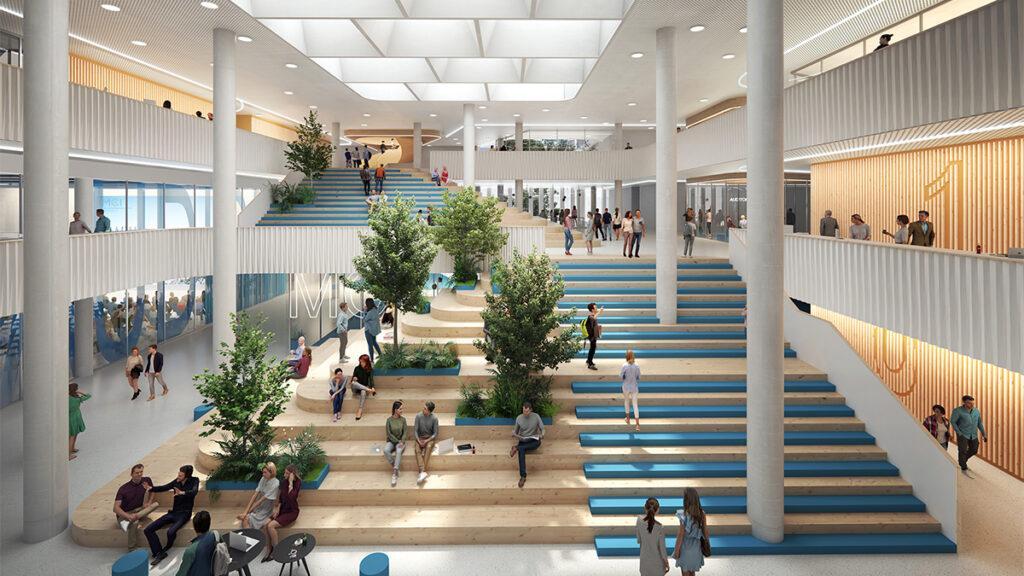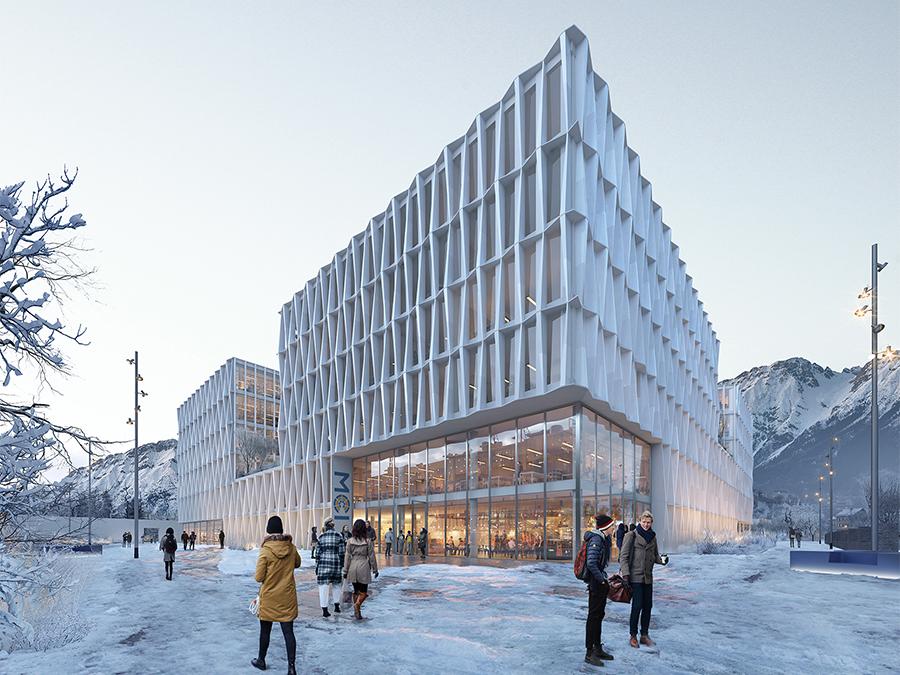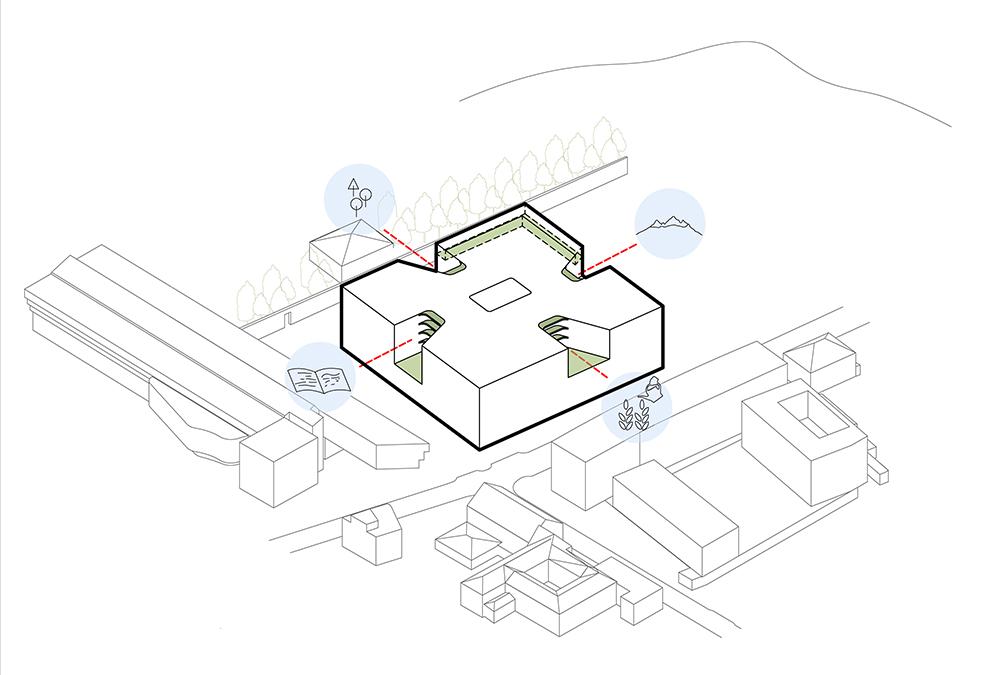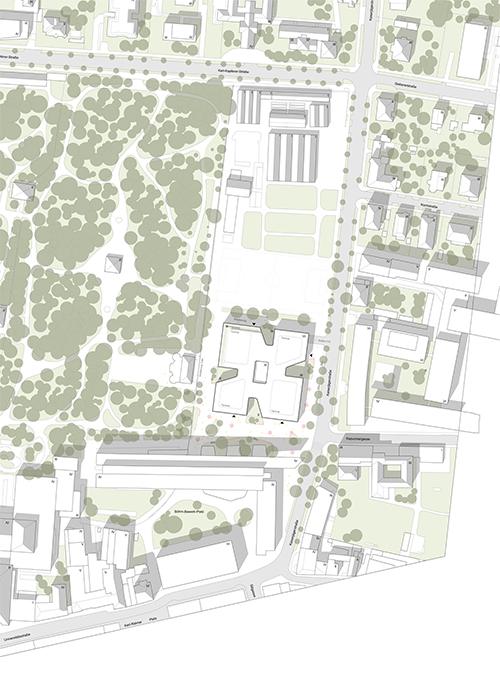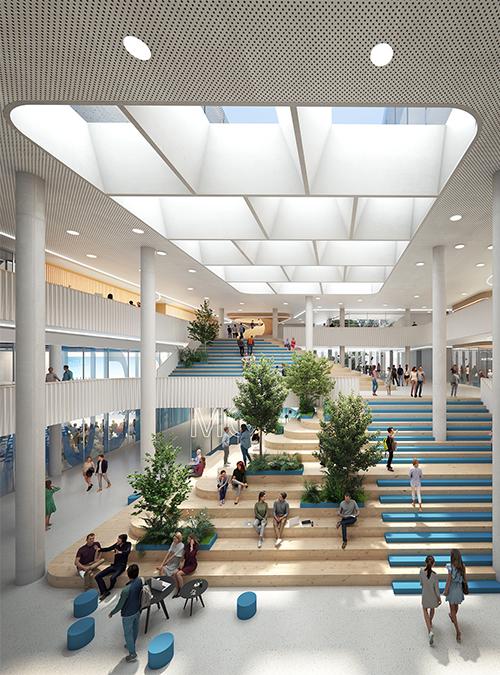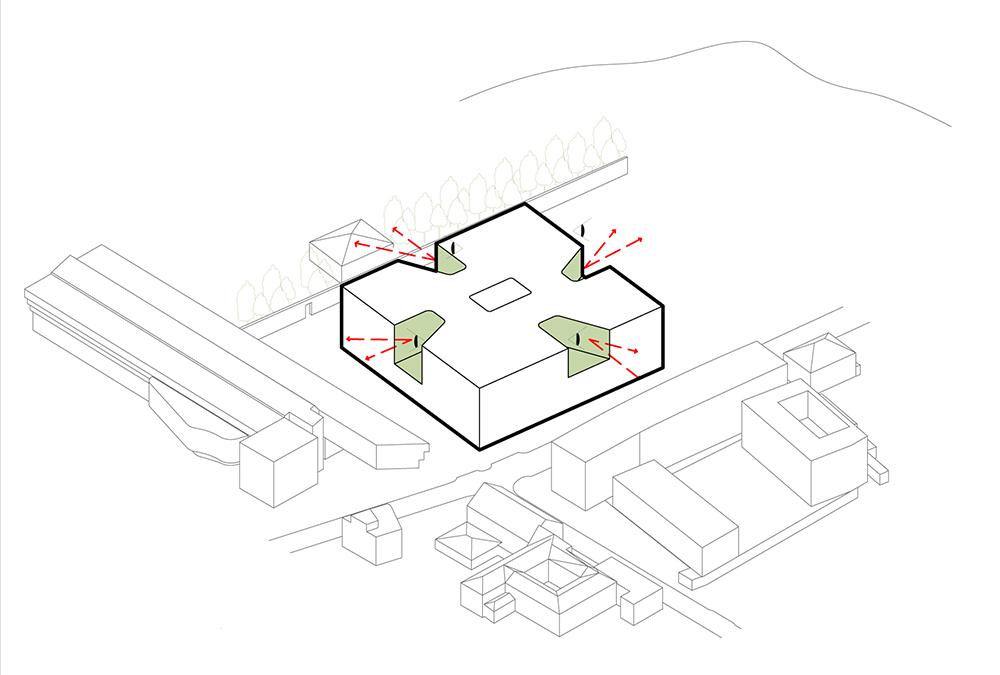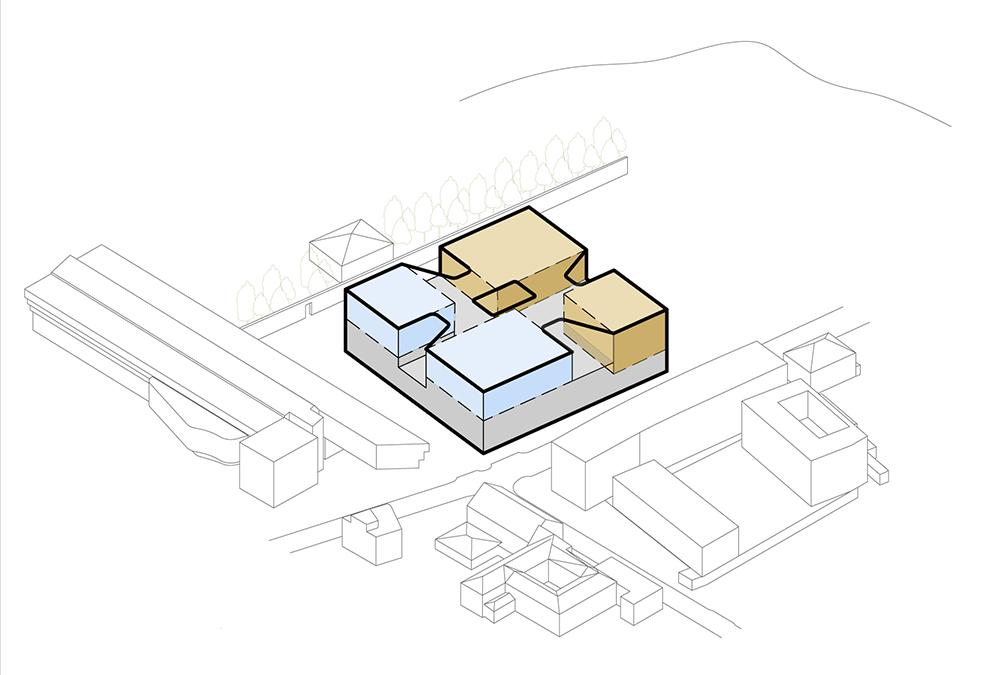Studying with an Alpine view
Danish architectural firm Henning Larsen has designed a university campus with a difference. The new building for the Management Center Innsbruck (MCI) provides a thoroughly modern student experience – at the heart of the city and with an all-round view of the Alps.
Is it easier to study when you constantly feel the pull of the outdoors, surrounded by a beautiful natural landscape? Students in Tyrol will soon find out – assuming their subject is taught in the Management Center Innsbruck (MCI). Here, the new building designed by Henning Larsen provides a clear view of the Alps from all windows. In any case, the Danish architects’ design has bright prospects: a modern university campus that has everything that is needed to inspire young minds.
Lighthouse project for Innsbruck
The new 35,000 m² MCI building on the outskirts of Innsbruck city centre is Henning Larsen’s first project in Austria. The office was awarded the contract after winning a two-stage competition and dialogue procedure. Particular praise was received from the judges for the “ideal urban development of the new campus as a lighthouse project between the historic Hofgarten, the University of Social Sciences and the new security centre”. The €135 million project is being realized by the PORR and Ortner consortium.
The new building will give the MCI the first unified campus in its history. Founded in 1995, the centre quickly outgrew its location in central Innsbruck, resulting in the various faculties being scattered around the city. But not for much longer: building work will begin in autumn 2023 and it will be ready for use early in 2025. All parts of the MCI will then be finally located in one place.
An all-round fit
The new university centre is bordered by the city to the south and east and by the Hofgarten to the north and west, with the Alps all around.
Henning Larsen’s elegant MCI building is designed without any front or back. Each facade contains multi-storey terraces that break the scale of the building in relation to its surroundings. These “pockets” are planted with gardens that fit with the relevant natural surroundings. This means that there are Alpine flowers in the north terrace facing the mountains and an urban terrace in the south side that borders the city.
As Lucas Ziegler, Associate Design Director at Henning Larsen, explains: “We found a wealth of inspiration in the landscapes and geography of Tyrol, especially in the way changing light alters the way you see the mountains throughout the day. The facade is an interpretation of this – its depth, verticality and angularity give the building an appearance that changes throughout the day and the seasons.”
Our design stands for openness, identity, communication and design excellence. We will bring our expertise in university construction from more than 60 years to this project and develop it further together with the MCI.
Andreas Schulte, Director of Henning Larsen’s Munich office
The classrooms and lecture halls are found on the outer edge of the ground floor, surrounding a fluid interior with a large communal staircase in the middle. This not only combines the three levels of “learning spaces” but also serves as a community space itself. The learning floors have an open, flexible design, providing plenty of “unprogrammed” space for studying, socializing and relaxing. Together, these areas take up almost as much space as the teaching areas themselves.
Building for the future
As Lucas Ziegler explains: “In learning projects today, there’s much less emphasis on the traditional model of dedicated classrooms connected by empty corridors. Having more fluid spaces reflects a better understanding how people actually learn and process new information. Our design supports the variety of ways people learn, but it is also an inviting place for people to meet.”
The upper storeys of the MCI building are divided into two sections. While one section houses offices for the MCI faculty, administration and students, the second contains laboratories and research spaces. The design is compact and highly efficient. Its four cores not only facilitate vertical circulation but also serve as social hubs within the large floor area.
Daylight: a key factor
Because natural light can have an enormous influence on learning, the architects made a point of channelling it into the interior of the new MCI building. Ziegler: “We designed each facade to have a depth that would allow light to come in without being distractingly direct. Coupled with a Henning Larsen skylight in the middle, light from inside goes out and light from outside comes in.”
Henning Larsen has extensive experience in educational architecture. After all, its successful team was also responsible for highly acclaimed designs like the Frankfurt Business School and the Lindner College of Business at the University of Cincinnati. The latter – like the Management Center Innsbruck – aims to create a learning environment with a “hygge feeling”. The studio always aims to infuse its urban renewal concepts with Danish quality of life as well. Their project in Brussels is just one example of this.
Expert team for the MCI
The other members of the team behind Henning Larsen’s winning Innsbruck design are also experts in sustainable, attractive buildings. These include Ramboll Studio Dreiseitl, Transsolar, WH-P Ingenieure, Röhrer Bauphysik and EUROLABORS. The city – and, of course, the students at MCI – can look forward to having a state-of-the-art university campus, with everything that goes with it. Including a view of the Alps from every window.
Text: Elisabeth Schneyder
Images: Sora, Henning Larsen
